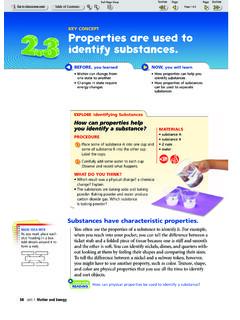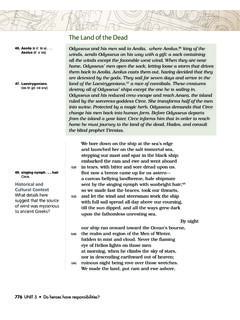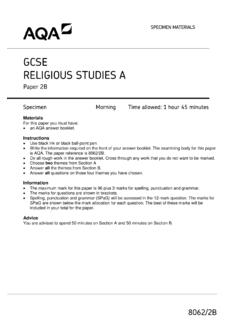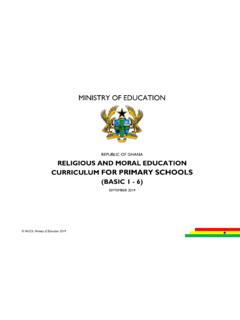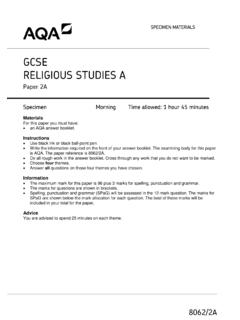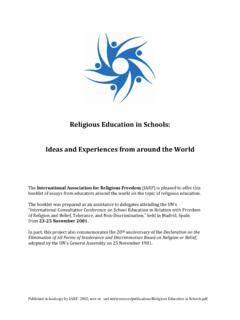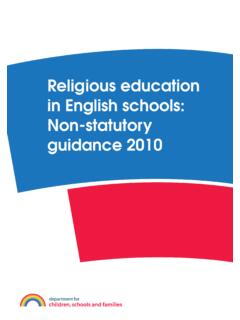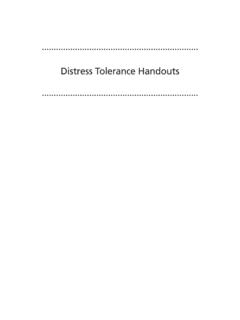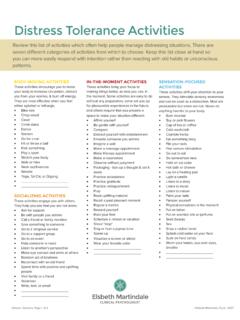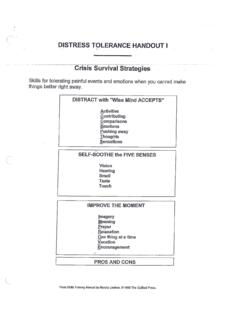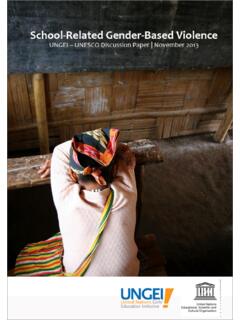Transcription of The Thirteen Colonies Interactive Power Point
1 The Thirteen Colonies Interactive Power Point Created by Tricia Tabler The Thirteen Colonies Presentation End Show Back About the author Concept Map Resources The Thirteen Colonies Geographic Regions The Colonies Economies Climate Natural Resources Population Religion Back End Show Three Geographic Regions The New England Colonies The Middle Colonies The Southern Colonies Back End Show The New England Colonies Colonies : The four original New England Colonies were : New Hampshire, Massachusetts, Connecticut, and Rhode Island. People: The people who settled and lived in the New England Colonies were from England. Economies: Farming in the New England Colonies was difficult due to the poor soil, cold climate and short growing season. Families in New England grew enough food to feed their families but had to rely on manufacturing and trade to earn livings.
2 Climate: The Climate in the New England Colonies was colder than the other two regions due to the northern location. Geography: The geography of New England was mostly hills and rocky soil. Natural Resources: The natural resources of New England were fish, whales, trees, and furs. Religion: The established religion of the New England Colonies was Puritan. religious freedom did not exist in New England. Back End Show New Hampshire Colony: New Hampshire Colony was founded in 1623 by Captain John Mason. New Hampshire was a planned colony. The land was granted to Mason who lived in Hampshire County, England. He sent settlers to the new land to establish a fishing colony. People: The people who settled and lived in the New Hampshire Colony were from England. The population was homogenous meaning there were not people from other nations or religions living in New Hampshire.
3 Economy: The economic and social life in New Hampshire revolved around sawmills, shipyards, merchant's warehouses, and established village and town centers. Lumber, Fish, Masts for the Royal Navy, and Turpentine were the main exports of the colony. Natural Resources: The major natural resource of New Hampshire was the forests. The timer in the region was used for masts and shipbuilding. Religion: The dominate religion of the New England Colonies was Puritan. There was no religious freedom or tolerance . Back End Show Massachusetts Colony: The Massachusetts Bay Colony was founded in 1620 by Separatists-Puritans. People: Separatists in England fled to Holland in 1608 and then decided to find refuge in America. They came over on the Mayflower. The population in Massachusetts was homogenous, meaning there were not people from other nations or religions.
4 Economy: Farming was difficult in the Massachusetts Bay Colony so people found other means of making a living by establishing a manufacturing base and trade. Major industry for the colony included Agriculture (fishing, corn, livestock), Manufacturing (lumbering, shipbuilding). Natural Resources: The main natural resource in Massachusetts was timber. The timber from the region provided the raw material for shipbuilding. Religion: The exclusive religion in the Massachusetts Bay Colony was Puritan. There was no religious freedom or tolerance in the colony. Back End Show Connecticut Colony: The Connecticut Colony was founded in 1635/1636 by Thomas Hooker and a group of Massachusetts colonists. People: The people who settled and lived in the Connecticut Colony were colonists who left the Massachusetts Bay Colony in 1635 looking for more religious and economic freedoms.
5 The Colony of Connecticut was formed in 1636. Economy: Conditions for farming where marginally better in Connecticut therefore, the major industry in Connecticut was agriculture. The crops produced in the colony were wheat and corn. Access to water ways also supported a fishing industry. Natural Resources: The natural resources found in the Connecticut Colony included better soils, timber, and fish. Religion: The colonists who settled the Connecticut Colony were seeking more religious freedom but were still strict and intolerant of other religious beliefs. Back End Show Rhode Island Colony: The Rhode Island Colony was founded in 1636 by Roger Williams. Williams was banished to England by the Massachusetts Bay Colony for his beliefs in separation of church and state and freedom of religion.
6 He fled and lived with the Narragansett Indians and formed Providence in 1636. People: The people who settled and lived in the Rhode Island Colony were mainly English from other Colonies and England who were looking for more religious freedom and tolerance . Economy: The economy of Rhode Island was more mixed than in the other New England Colonies . The better soils and slightly warmer climate of the colony made agriculture more profitable, agricultural endeavors include raising livestock and producing dairy. The access to water also allowed a fishing industry to flourish. The forests of the region supported a lumber industry Religion: The colony being founded on the principals of religious freedom and separation of church and state meant that there was much more religious tolerance and freedom in the colony.
7 Back End Show The Middle Colonies Colonies : The Middle Colonies consisted of Delaware, Pennsylvania, New Jersey, and New York. People: The Middle Colonies were the most ethnically and religiously diverse of the Thirteen original Colonies because of the influence of their Polish, English, Dutch, French and German origins. Climate: The climate in the Middle Colonies was relatively hot. This allowed for a longer growing season. It was warmer than its northern counterpart New England but cooler than the Southern Colonies Geography: The geography of the middle Colonies was made up of hills and flat lands with good soil. Natural Resources: The natural resources of the middle Colonies were iron ore and good soil. Religion: The Middle colonists were a mixture of religions, including Quakers (led by William Penn), Catholics, Lutherans, Jews, and others.
8 Back End Show Delaware Colony: The Delaware Colony was founded in 1638 by Peter Minuit and the New Sweden Company. It was first European settlement in the Delaware Valley on the Christina River. People: The population of the Delaware colony was more heterogeneous than population in the New England Colonies . The nationalities represented in the colony included English, Dutch, and Swedish. Economy: The economy of the Delaware Colony was mixed. The fertile land of Delaware made agriculture profitable and farms produced grain, rice, and indigo. The forests in the colony supported a thriving lumber industry. Industry in Colonial Delaware included shipbuilding, ironworks, trading and shipping lumber. Religion: There was a mixture of religions practiced in the Delaware Colony due to their stance on religious freedom and tolerance .
9 Back End Show Pennsylvania Colony: The Pennsylvania Colony was founded in 1681 by William Penn. The land was granted to Penn by the British Crown to pay of debt owed to Penn s father. People: Penn established the colony as a safe haven for Quakers who were persecuted in England. Economy: The economy in the Pennsylvania Colony was mixed. Fertile soils provided support for agriculture, the products of the farms were wheat, corn, cattle, and dairy. There was also manufacturing established in the colony. The manufacturing industry was made up of textiles, paper making and ship building. Religion: The colony was founded for the purpose of providing freedom and tolerance for the Quakers of England, and once established Penn and the Quakers granted religious freedom to everyone in the colony.
10 Back End Show New Jersey Colony: The New Jersey colony was founded in 1664 by Lord Berkeley and Sir George Carteret. Land was given to the two men by their friend, James Duke of York when he had received New Netherland. People: The colony was advertised and promised settlers many benefits including representational government and religious freedom. The colony quickly grew attracting people from different nationalities and religions. Economy: The economy in colonial New Jersey centered around agriculture including breeding of livestock. Iron was also mined and manufactured in New Jersey. Religion: The colony of New Jersey was established on the principal of religious freedom, therefore there were many religions represented in the colony. Back End Show New York Colony: The New York colony was founded in 1664 by the Duke of York.
